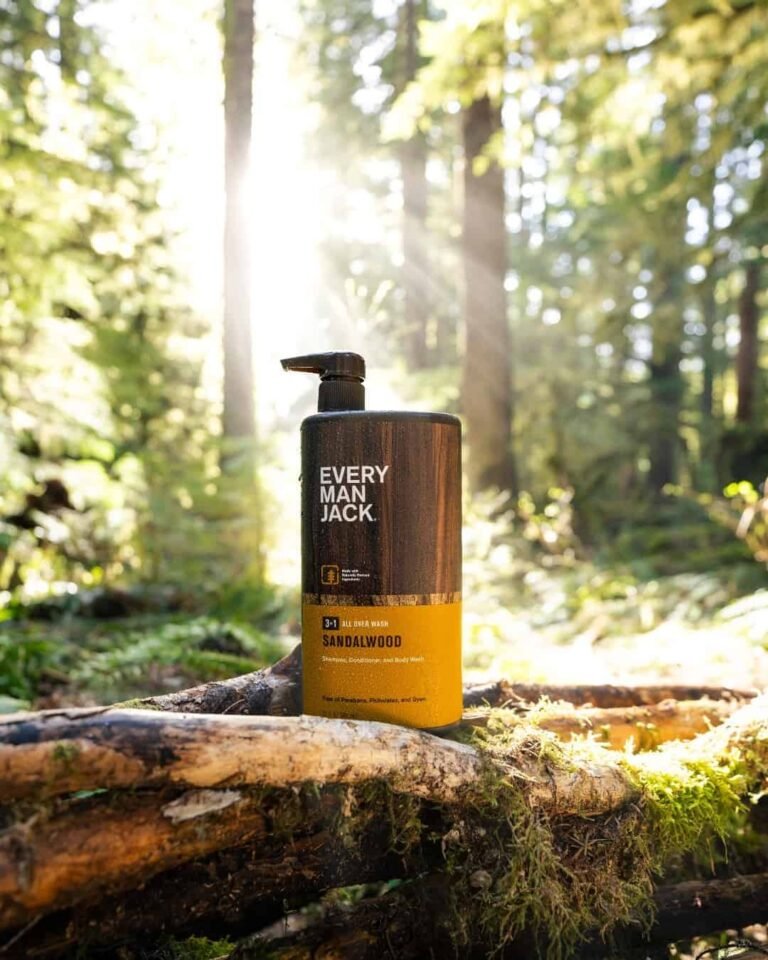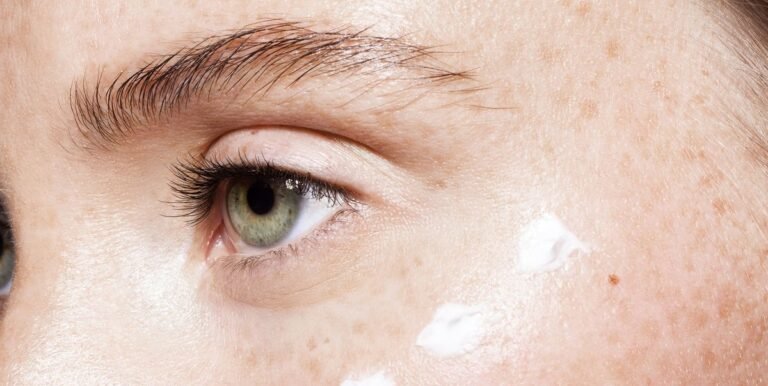Vietnam’s Cosmetics Industry: Strong Potential for Growing Market

Introduction
Vietnam’s cosmetics industry is a dynamic and rapidly growing market, showcasing strong potential and offering exciting opportunities for businesses. With a current valuation of $2.3 billion in 2021, this industry is projected to witness an impressive growth rate of 15-20% annually over the next decade. As the skincare market alone is expected to reach $1.9 billion by 2027, it’s evident that Vietnam’s beauty market is on a trajectory of success.
The thriving opportunities in Vietnam’s booming beauty market are accompanied by unique challenges that businesses need to navigate. In this article, we will explore the key dynamics of Vietnam’s cosmetics industry, including its market size, major players, consumer preferences, embrace of digital transformation, and the overall landscape of opportunities and challenges.
Vietnam’s cosmetics industry presents strong potential for growth in a rapidly expanding market.
With this introduction in mind, let’s delve into each aspect of Vietnam’s cosmetics industry to gain a comprehensive understanding of its potential and how businesses can tap into this lucrative market while adapting to local realities.
1. Market Size and Projected Growth
The Vietnamese cosmetics industry is currently valued at a staggering $2.3 billion, making it a significant player in the global beauty market. What’s even more impressive is the projected growth rate of 15-20% annually over the next decade, indicating a thriving and promising future for the industry.
Current Valuation of the Cosmetics Industry in Vietnam
With a market size of $2.3 billion, Vietnam has established itself as one of the fastest-growing beauty markets in Southeast Asia. The demand for cosmetics products is soaring, driven by factors such as increasing disposable income, changing consumer preferences, and a growing awareness of beauty and personal care among Vietnamese consumers.
Factors Driving the Impressive Growth Rate
Several key factors contribute to the impressive growth rate in Vietnam’s cosmetics industry:
- Rising Disposable Income: As the Vietnamese economy continues to grow and develop, disposable income levels are increasing. This provides consumers with more purchasing power, allowing them to spend on beauty and personal care products.
- Changing Lifestyles and Beauty Standards: Vietnamese consumers are becoming more conscious about their appearance and overall well-being. The desire to look good and maintain a healthy lifestyle has led to an increased demand for quality cosmetics products.
- Influence of Social Media and K-Beauty Trends: Social media platforms have played a significant role in shaping beauty trends and influencing consumer preferences in Vietnam. The popularity of Korean beauty (K-beauty) trends, with its emphasis on flawless skin and natural-looking makeup, has captured the hearts of Vietnamese consumers. This trend has been further fueled by the rise of K-beauty, which has had a similar impact on neighboring countries like China.
- Expansion of Modern Retail Channels: The growth of modern retail channels, such as shopping malls and supermarkets, has made cosmetics products more accessible to a wider consumer base. This convenience factor has contributed to the increased demand for beauty products.
Projected Market Size of $1.9 Billion by 2027
With the current growth trajectory, it is estimated that the Vietnamese cosmetics market will reach a value of $1.9 billion by 2027. This projection reflects the strong potential and opportunities available for both domestic and international beauty brands operating in Vietnam.
The projected growth is driven by various factors, including continued economic development, increasing consumer awareness and sophistication, and the expansion of e-commerce platforms. As more Vietnamese consumers gain access to the internet and online shopping, the demand for cosmetics products is expected to skyrocket.
In summary, Vietnam’s cosmetics industry is experiencing remarkable growth:
- Current market size: $2.3 billion
- Annual growth rate: 15-20%
Factors such as rising disposable income, changing consumer preferences, and the influence of social media and K-beauty trends contribute to this growth. With a projected market size of $1.9 billion by 2027, the future looks bright for the cosmetics industry in Vietnam.
To delve deeper into this subject, you can refer to studies like this research paper on wellness markets or reports by established firms such as [McKinsey](https://www.mckinsey.com/industries/consumer-packaged-goods/our-insights/feeling-good-the-future
Key Players in the Industry
The cosmetics industry in Vietnam is characterized by the significant presence of major foreign companies and the emergence of prominent domestic brands. Understanding the role and influence of these key players is essential to grasp the dynamics of the market.
Role and Influence of Major Foreign Companies
Foreign companies play a pivotal role in shaping the cosmetics landscape in Vietnam. Some of the major players include Unilever, Beiersdorf Vietnam, and LG Vina Cosmetics. These companies have established a strong foothold in the market and are instrumental in driving innovation, setting industry standards, and influencing consumer preferences.
Unilever
- A global consumer goods company with a diverse portfolio of beauty and personal care products.
- Signifies its commitment to catering to the evolving needs of consumers in the region.
- Continues to have a substantial impact on shaping beauty trends and influencing purchasing decisions.
Beiersdorf Vietnam
- Known for its skincare and personal care brands such as Nivea.
- Actively contributing to the growth of the cosmetics sector.
- Positioned as a key player in the Vietnamese market.
LG Vina Cosmetics
- A subsidiary of LG Household & Health Care Ltd., offering a diverse range of beauty and personal care products.
- Played a crucial role in elevating industry standards and expanding product accessibility.
Local Dominance: Prominent Domestic Brands
While foreign companies hold a substantial share of the market, there is also a growing presence of domestic brands that cater to local consumer preferences and demand for affordable products.
- Domestic brands have carved a niche for themselves by offering value-driven options that resonate with Vietnamese consumers.
- These brands understand the nuances of local culture, preferences, and purchasing power, allowing them to effectively compete alongside international counterparts.
- By focusing on affordability, quality, and understanding local beauty ideals, prominent domestic brands have gained traction among diverse consumer segments.
- Their ability to adapt swiftly to market trends and consumer feedback underscores their significance in shaping the domestic cosmetics landscape.
In navigating Vietnam’s cosmetics industry, acknowledging the interplay between major foreign companies and prominent domestic brands is crucial for stakeholders seeking to capitalize on the market’s potential while aligning with local realities.
Market Dynamics and Consumer Preferences
The Vietnamese cosmetics industry is shaped by various market dynamics and consumer preferences. Understanding these factors is crucial for companies looking to establish a strong presence in the country. In this section, we will explore:
- The dominance of South Korean products in the import market
- The impact of price sensitivity on consumer behavior
- The influence of K-Beauty trends and social media on beauty culture in Vietnam
Dominance of South Korean Products in the Import Market
Vietnam’s cosmetics import market is heavily influenced by South Korean products. South Korea has successfully positioned itself as a leader in skincare and beauty innovation, gaining popularity worldwide. In Vietnam, South Korean brands have gained significant traction and have become synonymous with quality and effectiveness.
Korean beauty products are known for their unique formulations, natural ingredients, and innovative packaging. Brands such as Innisfree, Etude House, and Tony Moly have established a strong presence in Vietnam, offering a wide range of skincare and makeup products.
The popularity of South Korean products can be attributed to factors such as:
- Effective marketing strategies: South Korean brands invest heavily in marketing campaigns, utilizing celebrity endorsements and influencer collaborations to create buzz around their products.
- Perceived quality: Vietnamese consumers perceive South Korean products as being high-quality due to their reputation for rigorous research and development processes.
- Influence of K-dramas: The popularity of Korean dramas in Vietnam has also contributed to the rise of Korean beauty trends. Consumers aspire to emulate the flawless skin and makeup looks showcased by their favorite K-drama actors and actresses.
The Impact of Price Sensitivity on Consumer Behavior
Price sensitivity plays a significant role in shaping consumer behavior within the Vietnamese cosmetics market. While consumers desire high-quality products, they are also highly conscious of price points. This is particularly true for younger consumers with lower incomes who seek affordable options without compromising on quality.
Vietnamese consumers are known for being value-conscious and price-driven. They carefully consider the price-to-quality ratio when making purchasing decisions. As a result, companies must set prices that align with Vietnamese buying power to remain competitive in the market.
Influence of K-Beauty Trends and Social Media on Beauty Culture in Vietnam
K-Beauty trends and social media have greatly influenced beauty culture in Vietnam. Social media platforms such as Facebook, Instagram, and YouTube have become powerful channels for:
- Discovering new beauty products
- Learning makeup techniques
- Staying updated on the latest trends
Influencers and beauty content creators play a crucial role in shaping consumer preferences. They showcase new products, share reviews, and provide tutorials that resonate with Vietnamese consumers. The popularity of K-Beauty skincare routines, such as the famous “10-step skincare routine,” has gained traction among Vietnamese beauty enthusiasts.
“Beauty bloggers and influencers collaborate with brands to promote their products, often through sponsored posts or partnerships.”
This influencer marketing strategy has proven to be effective in reaching target audiences and driving sales.
Social media also enables consumers to engage directly with brands and share their experiences. Reviews, recommendations, and user-generated content contribute to building brand loyalty and trust.
In summary, the Vietnamese cosmetics industry is influenced by various market dynamics and consumer preferences. South Korean brands dominate the import market due to effective marketing strategies, perceived quality, and the influence of K-dramas. Price sensitivity plays a significant role in consumer behavior, with affordability being a key consideration for many Vietnamese consumers. Additionally, K-Beauty trends and social media have shaped beauty culture in Vietnam, with influencers playing a pivotal role in driving product awareness and sales.
4. Embracing Digital Transformation: The Rise of E-commerce, Virtual Try-on Services, and Augmented Reality in the Cosmetics Industry
The cosmetics industry in Vietnam has undergone a significant digital transformation recently, thanks to the emergence of e-commerce platforms, the introduction of virtual try-on services, and the integration of augmented reality (AR) technology. These developments have not only made it easier for people to buy cosmetics but have also significantly improved their online shopping experience.
E-commerce: Making Cosmetics More Accessible
E-commerce has played a crucial role in making cosmetics more accessible to consumers across Vietnam. With the increasing popularity of online shopping, customers can now browse through a wide range of products from both local and international brands without leaving their homes. This convenience factor has contributed to the rapid growth of the cosmetics market in Vietnam.
- E-commerce platforms like Shopee, Lazada, and Tiki have become popular destinations for Vietnamese consumers looking to purchase cosmetics.
- These platforms offer a diverse selection of products, competitive pricing, and convenient delivery options, making it easier than ever for consumers to explore different brands and find their desired products.
- In addition to accessibility, e-commerce has also introduced various promotional campaigns and discounts that attract customers.
Virtual Try-on Tools: Transforming the Online Shopping Experience
Virtual try-on tools have completely changed how people shop for cosmetics online. These innovative technologies allow users to virtually try on different shades of makeup, experiment with different looks, and make informed purchasing decisions.
- By using augmented reality (AR) or artificial intelligence (AI), virtual try-on tools provide an interactive and realistic experience for consumers.
- Users can see how certain products would look on their own face or skin tone without physically trying them on. This eliminates the uncertainty and hesitation that often comes with purchasing cosmetics online.
- Many beauty brands and e-commerce platforms have integrated virtual try-on features into their websites and mobile applications.
- These tools not only offer convenience but also help consumers discover new products and explore different styles.
- They enable users to experiment with various shades of lipstick, eyeshadow, foundation, and more, empowering them to make confident choices when shopping for cosmetics online.
The Impact of Augmented Reality on the Cosmetics Industry
The integration of augmented reality (AR) technology has taken the online shopping experience in the cosmetics industry to a whole new level. AR allows consumers to virtually apply makeup in real-time using their phone’s camera or through web-based applications. This immersive experience enables customers to visualize how different products would look on them, enhancing their confidence in making online purchases.
Moreover, AR has become a powerful marketing tool for beauty brands. By leveraging this technology, companies can showcase their offerings in an engaging and interactive way, significantly increasing customer engagement and brand loyalty. The ability to try on products virtually has also led to a decrease in product returns, saving costs for both brands and consumers.
As technology continues
5. Exploring Opportunities and Navigating Challenges in a Dynamic Landscape
Vietnam’s cosmetics industry offers many opportunities for growth, especially in organic beauty products and post-COVID-19 economic recovery. However, succeeding in this ever-changing environment requires understanding what customers want and how the market works.
Capitalizing on the Demand for Organic Beauty Products with Vietnamese Ingredients
One of the main opportunities in Vietnam’s cosmetics industry is the increasing desire for organic beauty products made with Vietnamese ingredients. People are now more aware of what they put on their skin and actively look for natural, sustainable, locally-sourced options. This is a great chance for companies to create and promote cosmetics that use indigenous elements like coconut oil, turmeric, green tea, and aloe vera.
By using Vietnam’s diverse natural resources, businesses can meet the growing demand for wellness-focused, eco-friendly products. For instance, they could develop skincare items based on traditional herbal remedies or makeup lines that celebrate Vietnamese culture. These organic beauty products not only match what customers want but also help companies stand out in a crowded market.
Post-COVID-19 Economic Recovery and Its Impact on the Cosmetics Industry
The COVID-19 pandemic has affected the global cosmetics industry, including Vietnam’s. However, as the country bounces back from the pandemic and its economy improves, there are significant opportunities for growth in cosmetics. The post-pandemic recovery is expected to lead to higher consumer spending as people have more money to spare and feel more secure about their finances.
As people return to their usual routines, there will be a greater demand for beauty products and services. This is an ideal time for companies to launch new items, expand their product ranges, or try innovative marketing tactics to attract potential customers. By understanding how consumers behave during this recovery period through market segmentation, businesses can position themselves well and capture a larger share of the market.
Navigating Challenges in a Dynamic Landscape
Although there are promising opportunities, the cosmetics industry in Vietnam also faces several challenges that businesses must handle well. Some of these challenges include:
- Influence of Korean Trends and Celebrity Endorsements: South Korean beauty brands dominate the Vietnamese market and heavily influence what customers like. K-beauty trends and celebrity endorsements shape beauty culture in Vietnam, making it hard for new or foreign brands to succeed. To overcome this challenge, companies should do thorough market research, understand local preferences, and adjust their marketing strategies accordingly.
- Price Sensitivity among Young Consumers: Vietnamese consumers, especially those with lower incomes, are very sensitive to prices. This makes it difficult for companies that want to introduce high-end or premium products to the market. To tackle this challenge, businesses need to find a balance between affordability and quality, offering products at prices that Vietnamese people can afford.
- Consumer Stereotypes about Western Brands: Despite the popularity of Korean beauty brands, there are still stereotypes among consumers that Western brands are better in terms of quality and effectiveness. Changing these stereotypes requires educating customers about the benefits and uniqueness of Asian or local brands. Companies can use digital marketing channels, influencers, and customer testimonials to build trust and credibility among Vietnamese consumers.
- Market Research and Trend Analysis: In order to stay ahead in this dynamic landscape, businesses must conduct thorough [market research](
Conclusion
The Vietnamese cosmetics industry has great opportunities for growth, thanks to a dynamic market and changing consumer preferences. However, it also has its own challenges that require careful navigation to succeed.
Embracing Local Realities
- Vietnam’s cosmetics industry is valued at $2.3 billion in 2021 with an expected annual growth rate of 15-20%, making it attractive for both local and foreign companies.
- There is a demand for natural beauty products made with local Vietnamese ingredients like coconut, turmeric, green tea, and aloe vera. This presents a chance for innovation and standing out in the market.
- The post-COVID-19 economic recovery is predicted to increase the demand for cosmetics, which aligns with the high average salary growth rate in the Asia-Pacific region.
Navigating Challenges
- Despite the positive outlook, there are challenges such as young consumers with lower incomes being sensitive to prices and Korean trends influencing consumer behavior. This requires strategic adaptation.
- Consumer perceptions about Western brands and the popularity of South Korean beauty culture highlight the importance of understanding and catering to local preferences.
Tapping into Potential
Given these factors, it is clear that industry players need to take action to benefit from Vietnam’s cosmetics market while also recognizing and addressing local realities. This includes:
- Cultural Sensitivity: Understanding how K-Beauty trends and social media impact beauty culture in Vietnam and using this knowledge in product development and marketing strategies.
- Affordability: Setting prices that match the purchasing power of Vietnamese consumers, particularly younger demographics.
- Innovation: Using the diverse range of Vietnamese ingredients to create organic beauty products that appeal to both local and international buyers.
Looking Ahead
As Vietnam’s cosmetics industry continues to grow, embracing digital transformation through online shopping and virtual try-on services will be crucial in making it easier for people to buy and try out products.
The key to success in this expanding market is finding the right balance between taking advantage of its potential while also understanding the complex landscape shaped by local preferences. By facing these challenges with careful planning and flexibility, businesses can position themselves for long-term growth and relevance in Vietnam’s thriving cosmetics industry.










